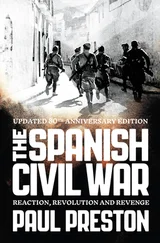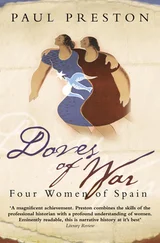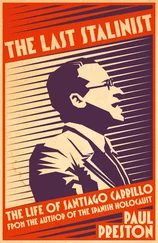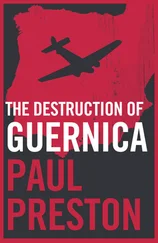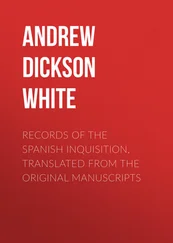Meanwhile, in Moguer to the south of the province, and in Palos de la Frontera to the east of the provincial capital, members of the clergy and local rightists had been taken into protective custody. In Moguer, as news filtered through of the repression in Seville, on 22 July the parish church was set on fire and a retired lieutenant colonel of the army was murdered after his house was attacked and looted by a large mob. The Mayor, Antonio Batista, managed to prevent any further deaths. In Palos, the Socialist Mayor, Eduardo Molina Martos, and the PSOE deputy Juan Gutiérrez Prieto tried unsuccessfully to stop the local CNT burning down church buildings including the historic monastery of La Rábida but did prevent any executions. On 28 July, Palos was captured by the Civil Guard without opposition and, on 6 August, Falangists from Huelva began a series of extra-judicial executions.
Gutiérrez Prieto, a talented and highly popular lawyer, was captured in Huelva on 29 July and tried on 10 August. In addition to military rebellion, he was accused of responsibility for virtually every action of the left in the province and sentenced to death. Numerous conservatives and ecclesiastical dignitaries interceded on his behalf. To counteract these pleas, Haro Lumbreras made a statement to the press which echoed the sexual obsessions of his distortion of General Pozas’s orders. No right-wingers had been harmed in Palos, yet he stated:
The enemy who burns alive entire families, who crucifies and burns alive the Bishop of Sigüenza in a town square, who cuts open the bellies of pregnant women, who murders innocent children, who steals, attacks buildings, burns, stains the honour of defenceless virgins, throws two hundred and fifty people into pits in Constantina and then throws in dynamite to finish them off, cannot and must not plead for mercy before those who would be his first victims if he got the chance.
Gutiérrez Prieto was shot on 11 August. To silence opposition to his execution, thirty inhabitants of Palos, including his uncle, were shot, along with twelve people from other towns. In Moguer, the arrival of the rebels unleashed a sweeping and well-planned repression that saw the homes of Republicans looted and women raped and claimed the lives of 146 people, including women and twelve-year-old boys. More than 5 per cent of the adult male population was murdered. 77
In the light of Haro Lumbreras’s declaration, it is worth recalling that the total number of right-wingers assassinated in the province from 18 July until it was totally in rebel control was forty-four, in nine locations. A further 101 died in armed clashes with the defenders of the Republic. The subsequent repression was of a different order of magnitude, not a vengeful response to prior left-wing violence but the implementation of a plan for extermination. In seventy-five of Huelva’s seventy-eight towns, a total of 6,019 were executed. 78In the days between the military coup and the fall of Huelva to the rebels, the Republican authorities had made every effort to protect those rightists arrested in the immediate wake of the military coup. There had been calls for serenity and respect for the law from the Civil Governor, the Mayor, Salvador Moreno Márquez, and Republican and Socialist parliamentary deputies for the province. One hundred and seventy-eight local extreme rightists, including Falangists and the most hated landowners and industrialists, were arrested. All were safe and well when the city was conquered. However, during the previous eleven days, six people were murdered. This was the only excuse that Haro Lumbreras needed to launch a bloody repression. There were nightly shootings without even the farce of a ‘trial’. Many of those of the right who had been saved by the Republican authorities protested. Haro was eventually removed on 6 February 1937 when it came to light that he had misappropriated donations of jewellery and money made to the rebel cause. Specifically, it appeared that he had used these funds to pay for the services of prostitutes. Evidence was produced showing that, over the previous fifteen years, he had frequently been guilty of theft and other abuses of his position. When he left Huelva, his luggage, carried in three trucks, consisted of ninety-three trunks and suitcases. After serving in Zaragoza, Teruel and Galicia, he became head of the Civil Guard in León. He was killed on 16 February 1941 by one of his junior officers. It was rumoured that the young man’s wife had been the unwilling object of Haro’s attentions. 79
In Seville, as in Huelva, the ‘the red terror’ was a much exaggerated justification for the repression, often no more than a contrived and feeble excuse. That the savagery visited upon the towns conquered by Spanish colonial forces was a repetition of what they did when they attacked a Moroccan village was proudly recognized by the rebels themselves. The first town taken by Castejón’s column was Alcalá de Guadaira to the south-east of the provincial capital. His official chronicler, Cándido Ortiz de Villajos, said of Castejón’s men recently arrived from Morocco that it was as if ‘they had brought with them, as well as the determination to fight for the salvation of Spain, the deadly, terrible, fatal and efficacious principles of the justice of the Qur’an’. 80The crimes during the four days of the so-called ‘red domination’ were cited to justify the repression carried out by the column. Among these ‘crimes’ was the death on the night of 17 July of Agustín Alcalá y Henke, one of the town’s principal olive-producers. A moderate and socially conscious Catholic, Alcalá y Henke had a long-term rivalry with another landowner, Pedro Gutiérrez Calderón, a supporter of the military uprising. Moreover, other employers had been infuriated when Alcalá y Henke had urged them to meet the demands of striking workers in the olive industry. He was shot by an unknown assassin. Many believed that he had been eliminated for betraying the employers’ interests and/or as an expendable victim to justify the imminent coup. When news of the military coup reached the town, a Popular Front Committee established under the chairmanship of the Mayor immediately appealed for calm. Since the local Civil Guard had pledged its loyalty to the Republic, it was not disarmed. 81
However, against the wishes of the Committee, the anarchist CNT–FAI organized a militia force. Two churches, a convent and seminary were set on fire and some religious images destroyed. Three private houses and three right-wing clubs had been searched and property thrown into the street – a situation eagerly exploited by criminal elements. Between 19 and 21 July, the Committee had detained thirty-eight right-wingers for their own protection. None was harmed and there were no more deaths after Alcalá y Henke. Anarchist efforts to burn the municipal jail were successfully repelled. When Castejón’s column reached Alcalá de Guadaira in the early evening of 21 July, it was joined by the local Civil Guard. The town fell after a successful artillery bombardment by Alarcón de la Lastra. In the words of his enthusiastic chronicler, ‘all the Communist leaders were killed while Castejón punished or rather liberated the town of Alcalá’. ‘Punishment’ was the Africanista euphemism for savage repression. The alleged ‘Communist leaders’ were actually four unconnected individuals. Three were shot by the advancing column: two of them young men who had come from Seville to buy bread and the third an agricultural labourer who ran in panic when he saw the Legionarios. The fourth was Miguel Ángel Troncoso, the head of the local police, who, according to his son, was shot in the town hall by Castejón himself. None could be remotely described as Communist leaders. Thirteen men captured in the town hall were taken to Seville, where at least six of them would be killed. Alcalá de Guadaira was then left in the hands of local rightists and a process of revenge began which saw the murders of a further 137 men. Another 350 were imprisoned and tortured, many of whom died. The belongings of the murdered and imprisoned were stolen by the new masters of the town. 82
Читать дальше

